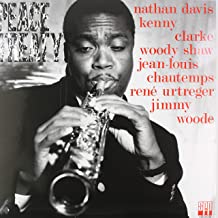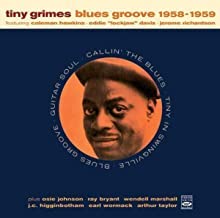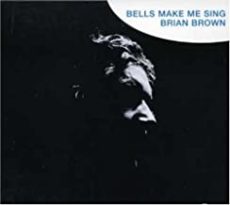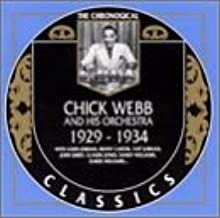
Daily Dose Of Jazz…
Nathan Tate Davis ws born February 15, 1937 in Kansas City, Kansas. He apprenticed in the Jay McShann band before heading off to college to receive his degree in Music Education. After being discharged from military service post World War II, he traveled extensively around Europe before settling in Paris, France in 1962.
Moving back to the States he went on to attain a Ph.D in Ethnomusicology from Wesleyan University and was a professor of music and director of jazz studies at the University of Pittsburgh from 1969, an academic program that he helped initiate. During his tenure he was founder and director of the University of Pittsburgh Annual Jazz Seminar and Concert, the first academic jazz event of its kind in the United States.
Nathan helped to found the university’s William Robinson Recording Studio as well as establish the International Academy of Jazz Hall of Fame located in the school’s William Pitt Union and the University of Pittsburgh-Sonny Rollins International Jazz Archives.
Retiring as director of the Jazz Studies Program at Pitt in 2013, Davis also served as the editor of the International Jazz Archives Journal. One of Davis’ best known musical associations was heading the Paris Reunion Band from 1985 to 1989, which at different times included Nat Adderley, Kenny Drew, Johnny Griffin, Slide Hampton, Joe Henderson, Idris Muhammad, Dizzy Reece, Woody Shaw, and Jimmy Woode.
Over the course of his career he worked with Eric Dolphy, Kenny Clarke, Ray Charles, Slide Hampton, Kenny “Klook” Clarke and Art Blakey. He toured and recorded with the post-bop ensemble leading Roots which he formed in 1991. As a composer, Nathan created various pieces, including a 2004 opera entitled Just Above My Head.
Tenor and soprano saxophonist, bass clarinetist and flutist Nathan Davis, who recorded eighteen albums as a leader, passed away on April 8, 2018 in Palm Beach, Florida, at the age of 81.
More Posts: bandleader,educator,flute,history,instrumental,jazz,music,saxophone

Requisites
Flute Fever ~ The Jeremy Steig Quartet | By Eddie Carter
The word impossible as defined in the Merriam-Webster Dictionary is “something that’s incapable of being or of occurring”. In the annals of music, some amazing musicians and vocalists have met the challenge of their disabilities head-on and in doing so, changed the word impossible to I’m possible instead! Jeremy Steig was an artist, graphic designer, and musician who began playing the flute at twelve and jazz at fifteen. At age nineteen, a motorcycle accident paralyzed one side of his face that might have ended his music career. It didn’t, because he used the paralysis within his mouth to blow air into the flute with the help of a special blinder-like mouthpiece that was placed inside his cheek, allowing him to play.
This morning’s album from my library is titled Flute Fever (Columbia CL 2136/CS 8936) by The Jeremy Steig Quartet. The other members are Denny Zeitlin on piano, Ben Tucker on bass, and Ben Riley on drums. An example of Jeremy’s artistic talent appears on the front cover. He also penned four drawings of the group on the back cover, and my copy used in this report is the 1964 Stereo LP.
Side One opens with Oleo by Sonny Rollins, he wrote it in 1954 and premiered it on the album, Miles Davis With Sonny Rollins. Jeremy and Tucker start the song as a duet with a strong rhythmic beat that takes off by leaps and bounds when Denny and Riley come in for the collective theme. Jeremy infuses the opening reading with zestful virtuosity as he vocalizes along on a vigorously swinging interpretation. Denny revs up the short and sweet closing statement with a soaring, exhilarating lyricism ahead of the leader’s ending theme and abrupt climax.
Lover Man (Oh, Where Can You Be?) by Jimmy Davis, Roger Ramirez, and Jimmy Sherman was composed in 1941 for singer-songwriter Billie Holiday. The quartet’s rendition opens with Steig leading a delicately gentle melody. Zeitlin gives a very touching performance on the song’s only solo preceding the foursome’s haunting tenderness on the coda. Sadly, omitted from this version are two elegant performances by Steig and Tucker, and a well-deserved compliment from the engineer at the song’s end that appears on the CD-album.
What Is This Thing Called Love?The Cole Porter song from the 1930 Broadway musical, Wake Up and Dream takes the foursome back to uptempo. After an effervescent melody, Jeremy begins with an exhilarating reading. Denny answers the flutist with an electrifying solo that excites intensely until the foursome’s coda. Miles Davis’ So What begins with Steig wailing on the opening, then continuing with a lengthy adrenaline rush of energy on the first interpretation. Zeitlin takes the next reading for a sizzling rollercoaster ride, then Tucker briskly walks on the closer.
The quartet takes on Thelonious Monk’sWell You Needn’t to begin Side Two. Monk wrote the tune in 1944 and was going to name it after jazz vocalist, Charlie Beamon, who upon hearing that replied, “Well, you need not”. The song starts at medium-fast speed for the quartet’s collective opening chorus. Jeremy steps into the spotlight first, igniting his solo with the brightness of an incandescent sun. Denny begins the final statement with no accompaniment for one chorus, before settling into a dazzling performance that’s a bebopper’s dream.
The beautiful 1932 song Willow Weep For Me by Ann Ronell is enchantingly rendered collectively with Jeremy’s flute conversing her lyrics daintily over a politely subdued supplement from the rhythm section. Denny contributes a brief interlude that’s beautifully constructed in between the opening and ending melodies by Jeremy culminating with a heart-warming finale. The LP ends with the album’s longest tune, Blue Seven by Sonny Rollins. The guys have fun right out of the gate with Steig and Tucker starting an easy-flowing duet that develops into a bluesy mid tempo opening chorus when Zeitlin and Riley join them. Jeremy and Denny have the two lengthiest statements and both men provide two meticulous but playful performances that take no prisoners. Tucker lays down some new soil on the next reading with a laid-back lyricism shadowed closely by Riley who doesn’t solo but contributes some bouncy brushwork that’s infectiously light-hearted and complements the soloists very well.
Jeremy Steig is the son of cartoonist William Steig whose work appeared in the weekly magazine, The New Yorker. His father also created the character Shrek, and Jeremy played the role of The Pied Piper on flute for the film, Shrek Forever After (2010). His mother, Elizabeth Mead Steig is the head of the fine arts department at Lesley University in Cambridge, Massachusetts. He recorded with pianist Bill Evans on the album, What’s New (1969), a critical success for both musicians. Steig became even more successful in the jazz-rock fusion genre in the seventies, recording a total of twenty-two albums during his career. Jeremy lived with his wife Asako in Japan and passed away from cancer at age seventy-three on April 13, 2016.
Pianist Denny Zeitlin, the lone survivor of the quartet, impressed producer John Hammond so much with his performance on Flute Fever, he also produced his debut album, Cathexis (1964). He recorded three more LP’s over the next three years, Carnival (1964), Shining Hour – Live at The Trident (1966), and Zeitgeist (1967). Denny recorded thirty-five albums over his five-decade career playing with some of the greatest names in jazz. He’s currently a clinical professor of psychiatry at the University of California in San Francisco, and also has a private practice there and in Marin County.
Bassist Ben Tucker has a very lengthy resume of the albums he appeared on and the musicians he played with. Ben worked with The Dave Bailey Quintet in 1961 and composed the song Comin’ Home Baby. It became a hit for Bailey on 2 Feet In The Gutter that year, and flutist Herbie Mann on Herbie Mann at The Village Gate (1962). Tucker owned two stations in his hometown of Savannah, Georgia, WSOK-AM and WLVH-FM. He passed away at age eighty-two in a traffic collision on June 4, 2013.
It might be easier to tell you who Ben Riley didn’t play with because his list of recordings is also enormous. He’s most known as the drummer in The Thelonious Monk Quartet. He was also a member of The New York Quartet and in the group Sphere. He passed away on November 18, 2017, at the age of eighty-four.
The album was produced by John Hammond but does not offer any other information on the recording engineer. However, the sound quality is absolutely sensational with a superb soundstage that’s startingly clear from your speakers to your sweet spot. If you’re a fan of jazz flute, I submit for your consideration on your next vinyl hunt, Flute Fever by The Jeremy Steig Quartet. It’s one illness, you won’t mind catching and requires only one listen to make you feel much better!
~ Carnival (Columbia CL 2340/CS 9140); Cathexis (Columbia CL 2182/CS 8982); Herbie Mann at The Village Gate (Atlantic 1380/SD 1380); Miles Davis With Sonny Rollins (Prestige PRLP 187); Shining Hour – Live at The Trident (Columbia CL 2463/CS 9263); 2 Feet In The Gutter (Epic LA 16021/BA 17021); What’s New (Verve Records V6-8777); Zeitgeist (Columbia CL 2748/CS 9548) – Source: Discogs.com
~ Oleo, Well You Needn’t, What Is This Thing Called Love? – Source: JazzStandards.com
~ John Hammond, Ben Riley, Ann Ronell, Jeremy Steig, William Steig, Elizabeth Mead Steig, Ben Tucker, Denny Zeitlin – Source: Wikipedia.org
~ Oleo – https://www.youtube.com/watch?v=t1bX-9Q6Qsc
~ So What – https://www.youtube.com/watch?v=jsBruIp_qnI
© 2021 by Edward Thomas Carter
More Posts: choice,classic,collectible,collector,flute,history,instrumental,jazz,music

Daily Dose Of Jazz…
Musa Kaleem was born Orlando Wright on January 3, 1921 in Wheeling, West Virginia. He bought a clarinet in 1937, and by 1939 was touring as a saxophonist with the El Rodgers Mystics of Rhythm, featuring Eddie Jefferson on lead vocals.
In the early 1940s he began using the name Gonga Musa, and then Musa Kaleem, the name by which he is best known. He played often in Pittsburgh, Pennsylvania in the Fortiess, gigging with Erroll Garner, Mary Lou Williams, and Art Blakey.
In the middle of the decade he toured with Fletcher Henderson, then relocated to New York City and played with Duke Ellington, Count Basie, Jimmie Lunceford, and the Savoy Sultans by the end of the 1940s. The 1950s saw Kaleem playing on cruise ships, however, upon his return in the 1960s he played with James Moody, Coleman Hawkins, Tiny Grimes, and rejoined Jefferson.
Saxophonist and flautist Musa Kaleem passed away on March 26, 1988 in Los Angeles, California.


Daily Dose Of Jazz…
Brian Ernest Austin Brown was born on December 29, 1933 in Melbourne, Australia and was a self-taught player and emerged in the 1950s, a leading figure in Australia. He performed as a soloist and with his own ensembles since the mid-1950s throughout Australia and in Scandinavia, United States, Japan, United Kingdom, Italy, Spain, the Netherlands, Brunei and Germany.
In early 1956 Brown returned to Melbourne from Europe and formed the Brian Brown Quintet with drummer Stewie Speer, trumpeter Keith Hounslow, schoolboy pianist Dave Martin and bassist Barry Buckley. The new hard bop band was a regular from 1955 to 1960 at Horst Liepolt’s Jazz Centre 44 in St Kilda, Victoria, Australia. They introduced bop to Melburnians, a musical style largely unheard in Australia.
He made eight albums over an 18-year period heading various groups. Touring Europe with his Australian Jazz Ensemble in 1978, Brian also led groups doing experimental and original classical pieces from 1980 to 1986.
As an educator, he founded the Improvisation Studies course at the Victorian College of the Arts, where he taught from 1978 until his retirement in 1998. He appeared at the World Saxophone Congress in Tokyo in 1988, with Tony Gould. In June 1993 he was awarded the Order of Australia for service to the performing arts.
Soprano and tenor saxophonist, flutist, synthesizer, panpiper, leather bowhorn, composer, and educator Brian Brown passed away on January 28, 2013.

More Posts: composer,educator,flute,history,instrumental,jazz,leather bowhorn,music,panpipes,saxophone,synthesizer

Daily Dose Of Jazz…
Wayman Carver was born on December 25, 1905 in Portsmouth, Virginia and was one of the earliest flute soloists to perform jazz. He was one of very few jazz flautists active in the swing era and his first professional experience was with J. Neal Montgomery.
After he moved to New York City in 1931, he recorded in the early Thirties with Dave Nelson, and played with Elmer Snowden, Benny Carter, and Spike Hughes.
From 1934 to 1939 he played with Chick Webb on both alto saxophone and flute. After Webb died he continued in the orchestra during its period of leadership under Ella Fitzgerald until 1941.
>After leaving the jazz scene he became a professor of music at Clark College, where he taught saxophonists George Adams and Marion Brown, among others. Flutist and alto saxophonist Wayman Carver passed away on May 6, 1967 in Atlanta, Georgia.




